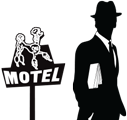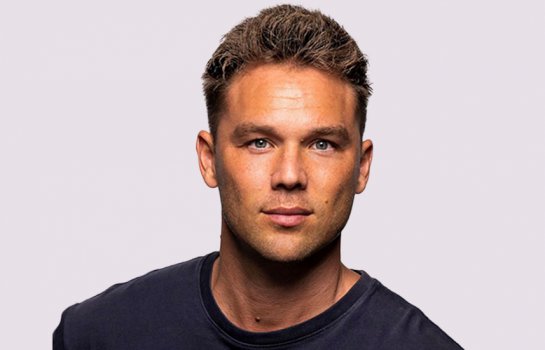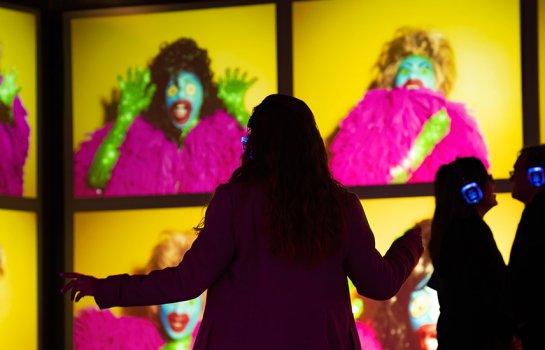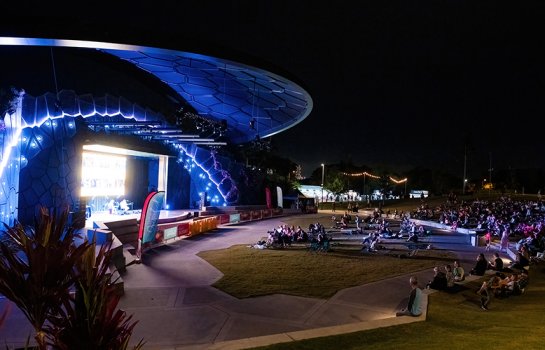Eric Nash, curator, A Permanent Mark: the impact of tattoo culture on contemporary art
Tattoo itself is influenced by contemporary art, as it is by music, pop culture, and any other frame of reference that people will draw from to conceive original designs ...
Once viewed as the markings of outlaws and people with loose morals, tattoos have infiltrated mainstream culture over the last half-century with one in seven people now sporting ink. Touring art exhibition from Townsville’s Pinnacles Gallery A Permanent Mark: the impact of tattoo culture on contemporary art explores the impact of tattoo culture on contemporary art and celebrates tattooing’s raised status as a legitimate art form. The exhibition is coming to The Arts Centre Gold Coast on December 12 but before it does, The Weekend Edition Gold Coast caught up with the exhibition’s curator Eric Nash to talk trends and technology.
Tell us about A Permanent Mark: the impact of tattoo culture on contemporary art?
A Permanent Mark was conceived in response to the increasing popularity and mainstreaming of tattoo. It seeks to look at the way contemporary art is now engaging with this field and highlights the way tattoo pushed back against the cultural cringe by showcasing leading artists, or artists whose work had been influenced by tattoo iconography, styles, history and technology.
How did the idea for the exhibition come about?
It’s probably been a concept that’s been gestating for a long time and really took hold within the Pinnacles Gallery team several years ago. The gallery was very keen to do an exhibition that was truly ‘in the now’. Tattoo seemed a perfect field of enquiry as in Australia, and particularly in Townsville where the exhibition was born, the practice has really taken hold across a wide range of demographics, not just those typically associated with tattoo. Art reflects society, so it’s no surprise that there is now a host of leading contemporary artists from around the world who are passionate about tattoo, and using or referencing it in their diverse works.
Once considered the mark of outlaws, do you believe society’s views towards tattoos have changed?
It’s hard to say with any certainty what society’s views of tattoos are as they’re not fixed or uniform. Dr Mair Underwood wrote of the nineteenth century fascination with tattoo amongst the highest European social classes, including figures such as Tsar Nicholas II and Winston Churchill. So I suppose tattoos, like many things, seem to fall in and out of favour. In my opinion though, there’s certainly a generational shift we’re experiencing at the moment. In the last couple of decades tattooing has become more popular, they’re more visible, and they’re worn by a more diverse section of society. People are more frequently confronted by tattoos, including by people from their own immediate social circle, and as a result of these relationships, people are probably less inclined to make immediate assumptions about those who do have tattoos.
How has the rise of tattoo culture impacted on the contemporary art world and vice versa?
In a variety of ways; in this show alone we see works by 16 Australian and international artists who have been impacted or are responding to tattoo. Tattoo itself is influenced by contemporary art, as it is by music, pop culture, and any other frame of reference that people will draw from to conceive original designs. More and more we see unique tattoo designs – artworks in their own right – in a wide range of styles, and less and less we see sheets of flash. Many tattoo artists now have formal art training, or are very skillful self-taught artists even when not using a tattoo machine.
Do you have a favourite piece in the collection? If so, can you tell us about it?
Having been so close to the show during its development and display, it’s very difficult to pick a favourite work, and I could make an argument for any piece. The work I came back to most frequently though is probably Shawn Barber’s immaculate triptych, Portrait of the Artist, Shige (Shigenori Iwasaki), 9 views. The work shows Barber’s tattoo contemporary, Shige, in slightly rotated standing poses. Each pose is a full body nude, showing Shige’s head-to-toe tattoos from a variety of angles. It’s just a stunning oil painting.
Tattoos have certainly come along way from the old navy tats. What have been some of the major trends over the years?
Mair Underwood’s publication essay for the exhibition is a really great insight into the trends of tattoo. She details the shifts from the early twentieth-century tattooing in North America, which remained on the fringes of society until around the 1960s, to the tattoo renaissance which saw more unique tattoo designs, and gradually custom tattoos.
What inspires you?
I’m inspired by creative people and those who want to make positive change.
What was the best advice you’ve received?
I receive good advice daily, but just to be myself and stay true to my beliefs is probably what’s held me in best stead. It’s probably also pertinent to tattooing as it is such a visible expression, that people will inevitably make judgments. It’s nice to see people having the confidence and conviction to be true to themselves and to express themselves so publicly.
Do you have a favourite artist?
I have painting heroes; people like Ben Quilty and George Gittoes inspired me when I was going through high school and university and I’ve been fortunate enough to meet them. The artist I most admire though is the German painter and sculptor Anselm Kiefer.
What do you hope people take away from the exhibition?
Above all else, I hope people just leave having enjoyed the show, having appreciated the artworks on display. For those who already love tattoo, I have no doubt there’ll be works they immediately respond to. For those who have a distaste for tattoo, perhaps they’ll grow an appreciation or at least a greater understanding and respect for the artform.





